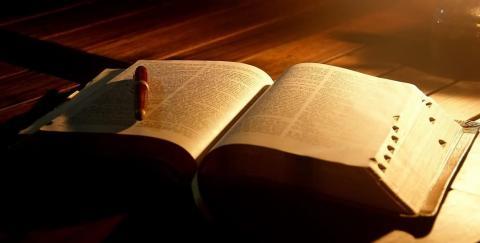Feast of Booths (Tabernacles)

February 28, 2022
Then the LORD spoke to Moses, saying, "Speak to the children of Israel, saying: 'The fifteenth day of this seventh month shall be the Feast of Tabernacles for seven days to the LORD. On the first day there shall be a holy convocation. You shall do no customary work on it. For seven days you shall offer an offering made by fire to the LORD. On the eighth day you shall have a holy convocation, and you shall offer an offering made by fire to the LORD. It is a sacred assembly, and you shall do no customary work on it (Leviticus 23:33-36).
The Feast of Booths (also called Tabernacles or Ingathering) took place on Tishri 15, five days after the Day of Atonement. This is comparable to our mid-October. The festival is described in Leviticus 23:33-43 and Deuteronomy 16:13-15, but the most detailed presentation is found in Numbers 29:12-40. For seven days the Israelites would present offerings to the Lord, during which time they lived in huts made from palm fronds and leafy tree branches.
The purpose for living in the booths was to recall the journey of the Israelites in the Sinai desert prior to entering the land of Canaan (Leviticus 23:43). The offering of the first day was thirteen bulls, two rams, and fourteen male lambs as burnt offerings, with one goat as a sin offering. Each day thereafter the number of bulls offered was decreased by one. The eighth day was exceptional: one bull, one ram, seven lambs, and one goat were offered (Numbers 29:12-38). These were all in addition to the grain offerings and freewill offerings (Numbers 29:39). The week was to be a time of joy as a final celebration and thanksgiving for that year's harvest (Deuteronomy 16:14-15).
The offerings for this week were an extraordinary expense (71 bulls, 15 rams, 105 lambs, and 8 goats). Burnt offerings were entirely consumed by fire; even the priests could not eat them. That expense, coupled with leaving the comfort of their homes to live in huts for a week, was an object lesson that all the good things in the Promised Land are gifts from God. They cannot be hoarded or taken for granted. At the same time, returning to a period of living as aliens in huts helped to recall the sense of national community experienced in the period of the exodus.
Zechariah 14:16-19 describes the eschatological celebration of the Feast of Booths. The time will come when all Gentiles join Israel in participating in this festival and worship the Lord. Any nations that do not join in the celebration will suffer drought. Zechariah's point is that Gentiles must identify with Israel in its deliverance and journey through the Sinai.
John 7:2-10 describes Jesus’ visit to Jerusalem during the Feast of Booths. On the last day of the feast Jesus promised that any who came to Him would experience living water flowing from within (the Holy Spirit; John 7:37-39). By New Testament times, the tradition had developed that during the feast a priest would draw water from the pool of Siloam and carry it in a sacred procession to the altar. This was behind Jesus' metaphor. The New Testament also reflects the theology and symbolism of the Feast of Booths in the term ‘tent’ as a metaphor for our mortal body awaiting the glory of the resurrection (2 Corinthians 5:1-4; 2 Peter 1:13-14). Amen.
Pastor
